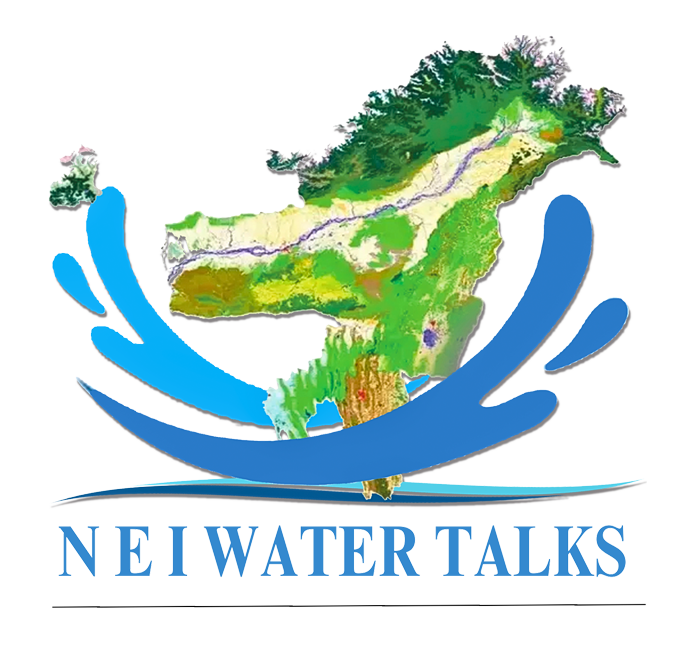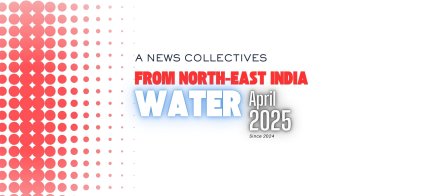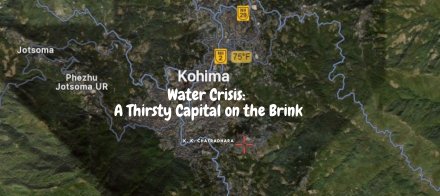 |
Kohima’s Water Crisis: A Thirsty Capital on the Brink
K.K. Chatradhara, NEIWT
Introduction
Nestled in the verdant hills of Nagaland, India, Kohima, the state’s capital, is a city of breathtaking beauty and cultural richness. Perched at an average altitude of 1,444 meters above sea level and sprawling across 1,041 square kilometers, Kohima is home to 365,017 residents, as recorded in the 2011 census. Yet, beneath its scenic charm lies a deepening crisis: acute water scarcity that threatens the daily lives and livelihoods of its people.
Despite receiving 2,000 mm of rainfall annually, the city struggles to retain and distribute this bounty, leaving families parched and communities on edge. A poignant social media post by Dr. Janbemo Humtsoe on April 10, 2025, underscored the gravity of the situation, warning that many households can no longer afford water, raising fears of social unrest if the crisis persists unchecked.
Geographical and Climatic Constraints
Kohima’s rugged topography is both its allure and its Achilles’ heel. The district’s terrain, a mosaic of low to high structural hills with steep slopes, channels monsoon rains into rapid surface runoff, leaving little to replenish groundwater reserves. Most of the annual rainfall is concentrated between July and August, with sporadic showers in September and October. Much of this water is lost to rivers and streams, bypassing groundwater recharge.
The city’s temperate climate offers little reprieve: winters dip to a chilly 1°C, and summers rarely exceed 22°C. However, erratic rainfall patterns and prolonged dry spells—such as those reported in April 2025—have severely strained Kohima’s spring-based water supply, pushing the city toward a critical tipping point.
Hydrogeological and Groundwater Challenges
Kohima’s geological profile poses formidable challenges to groundwater retention and extraction. The district sits atop semi-consolidated Tertiary formations—Disang, Barail, Surma, and Tipam groups—which have limited groundwater potential. While the Disang Formation features fractured shales and sandstones, offering only modest yields, deeper and more productive aquifers are found in the Tipam sandstones of the valley regions.
Steep slopes (over 20% gradient) limit groundwater recharge, confining viable development to intermontane basins and valley fills. As per the Central Ground Water Board’s 2024 report, Nagaland’s total groundwater extraction stands at only 0.03 billion cubic meters (BCM), with Kohima’s development at a mere 2.13%.
Agricultural and Irrigation Limitations
Agriculture, the lifeblood of Kohima’s rural economy, is largely based on traditional practices such as jhum (slash-and-burn) and terrace cultivation. Crops like paddy, maize, millets, pulses, and potatoes dominate the landscape, supporting thousands of households.
However, the region’s mountainous terrain limits the use of groundwater for irrigation. Surface water sources, already dwindling, are the primary source of irrigation. Modern irrigation infrastructure is largely absent, leaving farmers exposed to crop failures, especially during dry spells—thus threatening food security.
Social and Economic Repercussions
The water crisis has exacerbated social inequality and economic hardship. In urban areas, nearly 40% of households spend up to ₹5,000 monthly on water from private vendors—an unsustainable burden for many. This has created a divide between wealthier residents and those barely scraping by.
Health consequences are stark: local health centers recorded a 30% increase in waterborne diseases such as diarrhea and typhoid in 2024. The average urban water availability is just 20 liters per person per day, far below the World Health Organization’s recommended 50 liters.
Community leaders, including Ram Wangkheirakpam, have issued stark warnings about a looming “water revolt” unless the inequities in access are urgently addressed.
Infrastructure and Management Deficits
Kohima’s aging water infrastructure is ill-equipped for current demands. Over 35% of the city’s water distribution pipes—over two decades old—leak excessively, wasting around 25% of supplied water before it reaches households.
Rural areas depend on springs and streams, many of which are drying up due to deforestation, climate change, and declining rainfall. The Public Health Engineering Department (PHED) has acknowledged that source depletion and dry spells, like those observed in April 2025, will worsen supply shortfalls. The lack of recharge infrastructure—such as ponds, rain gardens, and groundwater recharge wells—further aggravates the situation.
Recent Initiatives and Developments
Despite these challenges, recent initiatives provide glimmers of hope:
-
In April 2025, a ₹26.26 crore rural water supply project was launched to serve 24 villages in Chiephobozou.
-
The PHED invited tenders for a water supply augmentation project sourcing water from the Teupuiki/Dzupfu River.
-
A 2024 study revealed that rooftop rainwater harvesting could meet up to 64.70% of Nagaland’s domestic water demand, highlighting a scalable solution.
These measures are promising but require long-term commitment, funding, and community involvement.
Policy Framework: A Beacon of Hope
Nagaland’s Water Policy (2016) and State Forest & Environment Policy (2015) provide a robust foundation for long-term resilience:
-
Water Policy: Emphasizes community participation, water as a human right, spring rejuvenation, and decentralized rainwater harvesting.
-
Environment Policy: Advocates for reforestation, biodiversity protection, and integrated watershed management to restore natural water cycles.
Both policies support gender-inclusive governance, climate resilience, and equity, offering a comprehensive roadmap toward sustainable water management.
Recommended Solutions
A multifaceted approach is essential to combat Kohima’s water crisis:
-
Rooftop Rainwater Harvesting: Incentivize installations on hilltop homes.
-
Spring Development: Revive high-yield springs, especially in valleys.
-
Groundwater Development: Target valley fills for dug wells (10–15m depth) and bore wells (100–150m), using electrical resistivity surveys.
-
Runoff Management: Install check dams, gabions, weirs, and contour bunds to reduce runoff and recharge aquifers.
-
Reforestation: Restore forest ecosystems to improve catchment efficiency.
-
Infrastructure Upgrades: Replace aging pipelines and modernize urban supply systems.
Conclusion
Kohima stands at a crossroads. Its escalating water crisis—driven by rugged geography, fragile geology, and failing infrastructure—poses a clear and present danger to public health, social stability, and economic vitality. However, targeted interventions like rainwater harvesting, spring rejuvenation, and policy-driven reform offer a viable path forward.
Unless addressed with urgency and unity, the crisis risks deepening inequality and unrest. Yet with decisive action, Kohima can emerge as a model of resilience, ensuring equitable access to water—the very essence of life—for all.
References
-
"Kohima District at a Glance," Statistical Handbook of Nagaland, 2007.
-
Census of India, "District Census Handbook: Kohima," 2011.
-
Dr. Janbemo Humtsoe, Social Media Post, April 10, 2025; response by Ram Wangkheirakpam.
-
World Health Organization, Domestic Water Quantity, Service Level and Health, 2020.
-
"Water Scarcity in Kohima: Prolonged dry spells in April 2025 strained Kohima’s spring-based water supply," North East India Water News Collectives, April 2025.
-
Dynamic Ground Water Resources of Nagaland, Central Ground Water Board, 2024.
-
"Source Depletion Affects Water Supply in Kohima," Department of Information & Public Relations, Nagaland, April 2025.
-
"Rio commissions ₹26.26 cr water project, Tourism infra in Kohima dist," Nagaland Post, April 30, 2025.
-
"Invitation for Bids: Kohima Town Water Supply Augmentation Project," New Development Bank, August 2024.
-
"Assessment of Rooftop Rainwater Harvesting Potential: A Case Study for Nagaland," IJRASET, 2024.
-
Nagaland Water Policy, Government of Nagaland, 2016.
-
State Forest & Environment Policy, Government of Nagaland, 2015.
Geolocation is 25.658596, 94.105331


